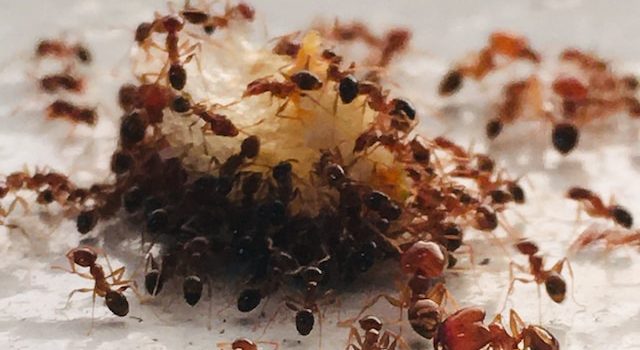
Introduction: Ants, those industrious insects that seem to be constantly on the move, have intriguing dietary habits that contribute to their survival and success as a species. From scavenging for food to engaging in remarkable agricultural practices, ants exhibit a diverse range of dietary preferences and resource-finding techniques. Join us as we delve into the fascinating world of ant nutrition, exploring what ants eat and how they navigate their environment in search of sustenance.
- Foraging for Food: Ants are adept foragers, tirelessly scouring their surroundings for nourishment. They exhibit a wide range of dietary preferences, with some species being omnivorous, while others are specialized herbivores or predators. Foraging ants often follow scent trails left by their fellow workers, which are established using pheromones. These trails guide them to food sources, allowing for efficient resource utilization within the colony.
- Sugar and Carbohydrate Sources: Many ant species have a sweet tooth, displaying a fondness for sugary substances. They are particularly attracted to plant secretions, such as nectar from flowers or honeydew excreted by aphids and scale insects. Ants often form mutually beneficial relationships with these insects, protecting them from predators in exchange for access to their sugary excretions. Additionally, ants may scavenge for fallen fruits, tree sap, or even sugary substances left by humans.
- Protein and Insect Prey: Protein-rich food sources are vital for the growth and development of ant colonies. Some ant species are skilled predators, hunting other insects and small arthropods. They employ various strategies, such as ambush tactics or group hunting, to capture their prey. Protein sources may also include scavenging on deceased animals or feeding on the remains of other arthropods.
- Fungus Farming: Certain ant species have taken agricultural practices to a whole new level by cultivating their own food sources. Leafcutter ants, for example, cut and transport fresh leaves back to their nests, where they use them to cultivate a specialized fungus. This fungus becomes the primary food source for the ants. The remarkable symbiotic relationship between ants and fungi provides the colony with a constant and reliable source of nourishment.
- Seed Dispersers: Ants play a vital role in seed dispersal, contributing to the regeneration of plant species. Some ants have a mutualistic relationship with plants, collecting seeds and transporting them to new locations. These seeds, often surrounded by a nutrient-rich appendage called an elaiosome, serve as a food source for the ants. The ants carry the seeds back to their nests, consuming the elaiosome and leaving the seed intact, which enhances its chances of germination.
Conclusion: The dietary habits of ants encompass a diverse range of food sources, reflecting their adaptability and resourcefulness. From foraging for sugary substances to engaging in sophisticated agricultural practices and contributing to seed dispersal, ants have mastered the art of finding sustenance in their environment. Their dietary preferences and foraging techniques not only sustain their individual colonies but also play significant ecological roles, making ants invaluable contributors to the ecosystems they inhabit.










